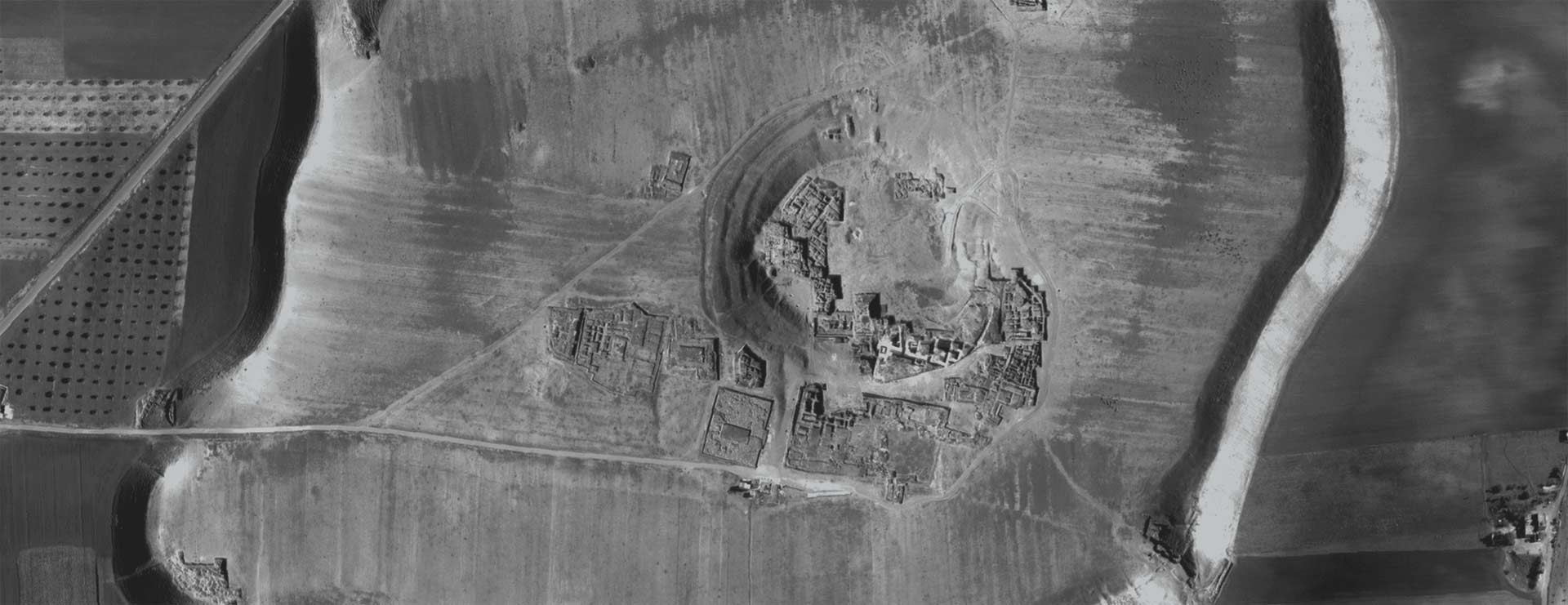[First posted in AWOL 28 February 2011. Updated 13 November 2021]
Ebla Digital Archives
Ebla (ancient Tell Mardikh) is an ancient city-state in North-West Syria, which flourished in the mid-third and early second millennia BCE. Since 1964, the “Italian Archaeological Mission to Syria” has been excavating the site, under the direction of Paolo Matthiae. The direction is presently shared by Paolo Matthiae and Frances Pinnock. Within the collapsed rooms of the royal palace, the excavators found ancient archives, made of thousands of cuneiform tablets, datable to the 24th century BCE.
Based on a partnership with the Ebla Archaeological Mission, the Ebla Digital Archives [ EbDA ] project aims to provide a digital edition of the entire corpus of Ebla texts. It includes all documents published so far in the ARET series (“Archivi Reali di Ebla – Testi”) as well as in other monographs and journals. Compared with hard copy publications, the digital edition provides harmonized transliterations, corrections and numerous collations made over the years (after 2010 on the basis of published photographs only) by the team of epigraphers who cooperate with the “Italian Archaeological Mission to Syria”. Scholars in the field of cuneiform studies may find a complementary treatment of the texts (historical introductions, philological commentary and translations) in the printed volumes of the ARET series. These volumes have been published by “Missione Archeologica Italiana in Siria” from 1981 to 2017, and by Harrassowitz Verlag from 2018 onward.
The Ebla Digital Archives project provides scholars and students alike with an easy-to-use, yet powerful research tool for the study of the Ebla texts. Users may browse the documents individually, or query data in the most flexible way, thanks to one of the most advanced database implementation for the digital representation of cuneiform documents. An extensive, searchable, up-to-date bibliography of all Ebla material published so far complements the results.
A Project of Ca’ Foscari University of Venice
in collaboration with Cnr - ISMedNOTA BENE. Except where noted otherwise, all digitized images within the EbDA project are copyright protected and property of the “Italian Archaeological Mission to Syria” (MAIS). Such material is intended for personal, non-profit use of scholars and students. Commercial use, reproduction, or publication in whatever form (print, digital, etc.) is strictly prohibited without prior written agreement with the copyright holder.
Text in EbDA pages (transliterations, catalogue data, etc.) is equally meant to support research and study only. Its limited re-use in scholarly work is allowed, according to common academic practice, in which case we kindly request to include a reference to EbDA and its URL > ebda.cnr.it <, as source.
The Project
The project is carried out within the framework of the Sinleqiunnini project. The text encoding system was originally designed by Giorgio Buccellati (member of the International Committe for the Study of the Ebla Texts), and then slightly modified in order to capture the full complexity of the Ebla evidence.
EbDA takes advantage of the good philological progress made over the years by several scholars, who kindly provided us with collations, corrections and suggestions. The list of contributors includes Alfonso Archi as chief epigrapher, Maria Giovanna Biga, Marco Bonechi, Amalia Catagnoti, Giovanni Conti, Massimo Maiocchi, Lucio Milano, James Platt and Maria Vittoria Tonietti.
With the collaboration of:
Erica Scarpa / Data entry supervisor and bibliography
Mirko Surdi / Data entry
Enrico Marcato, Francesco Bianchi, Stefan Feichtinger / Previous collaborators
EbDA v.2 in numbers:
- 3182 Tablets:
- 309937 Words:
- 16409 Unique occurrences of words:
- 533 Cuneiform signs in use:
- 2025 Unique readings of cuneiform signs:
Tuesday, April 13, 2021
Ebla Digital Archives
Subscribe to:
Post Comments (Atom)









 Stumble It!
Stumble It!

No comments:
Post a Comment